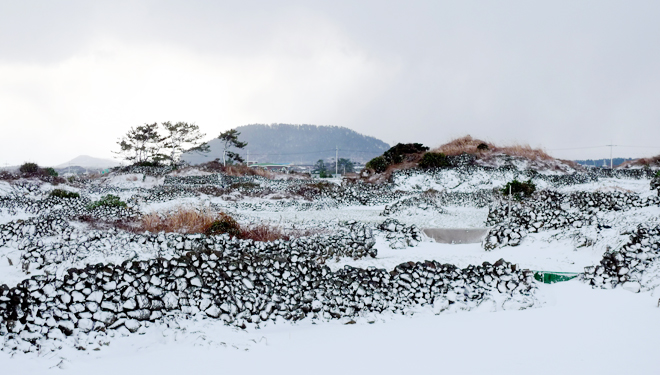Jeju
Samda-do
-

-
Since Jeju is abundant in Wind, Stone and Women, it has often been called Samda-do, a nickname which has been since olden times. First and foremost since it is surrounded by water from all side,s plenty of wind is obvious. Every house has a piled up layer of stones called ‘Doldam’ which have holes in it that is why even fierce winds also pass by them easily. All these stones in Jeju were formed by Mt. Halla’s volcanic eruptions. The reason behind a higher number of women compared to men is as the men used to go into the sea to catch fish and they often get caught in typhoons etc. and hence were not able to get back home. Jejudo natives have to deal with harsh natural environment . It is because of them that this beautiful Island still exists.
- Wind Stone Woman
- Stone
-

- Whether on a clear day or in a fierce storm, Jeju’s dolhareubang (stone grandfathers) act as guardians to protect the island against all odds. Each seems like a tough guardian but if you look at him more closely he is quite cute with his bulging eyes and rounded stomach. There is no one representative figure and the statues vary from village to village. The boy statues are placed on both sides of a gravesite to act as a helpers and at times companions to the spirit of the deceased. Since these sculptures are made of basalt, they contain the unique essence of Jeju. Bangsatap are stone towers built to cover some inauspicious or ill-omened place so as to ensure the peace of the village. Before raising the stone tower, the villagers bury a rice scoop or cauldron. A rice scoop represents abundant prosperity with rice filling every pot. The cauldron symbolizes their wishes that their village and families will remain safe from all kinds of adversity, just like a cauldron is impervious to fire.




